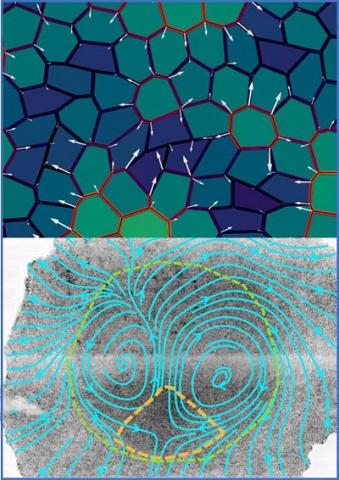
Researchers at the University of Dundee have been awarded £2.1 million from UK Research and Innovation (UKRI) to determine how thousands of cells self-organise to form the embryonic body plan.
The project, undertaken in collaboration with the University of Oxford and University College London, is one of nine funded by an £18 million investment from UKRI and Wellcome through the Physics of Life Strategic Priorities Fund.
Led by Dundee’s Professor Kees Weijer and Dr Rastko Sknepnek together with Professors Julia Yeomans (Oxford) and Guillaume Charras (UCL), the research aims to understand the integration of cell and tissue dynamics during gastrulation. Gastrulation is the process during which the basic embryonic tissues are formed, arranged, and shaped in space.
The cellular mechanisms controlling gastrulation, when activated in the wrong place or at the wrong time, result in severe congenital defects, such as heart defects, conjoined twinning, spina bifida, and disease in adult life, such as cancer and malfunction of the immune system. Understanding the fundamental principles that drive gastrulation, and what happens if they go wrong, will provide useful insights for developing future treatments.
Professor Weijer said, “Understanding early embryonic developmental processes such as gastrulation requires the analysis of how cell behaviours such as cell differentiation, division, and movement of hundreds of the thousands of cells are integrated to form and shape tissues and organs in the developing embryo.
“These interactions need to be precisely controlled by chemical signals such as diffusible molecules and mechanical signals, such as pushing and pulling between cells and cells and tissues.
“This project will use an integrated approach of advanced live microscopy, theoretical soft matter physics and biophysics, and computational modelling to address the biochemical and biophysical cell-cell signalling mechanisms that coordinate the behaviours of hundreds of thousands of cells to form and shape critical tissues during the early phases of embryonic development.”
Dr Sknepnek added, “The goal of the project is to advance our understanding of gastrulation in the chick embryo, a model system for gastrulation in humans, using a combination of experiments, physical modelling, and computer simulations.
“In particular, we will focus on determining how mechanical forces generated through specific cell behaviours such as cell division, extrusion, and death help lay out the future body plan.
“Results of this project will not only advance understanding of how cells sharing mechanical and chemical cues cooperate with each other to shape complex life, but also provide insights into physics of active matter by linking behaviours of individual cells to collective motion patters of the entire embryo.”
The Physics of Life Strategic Priorities Fund is a unique approach harnessing physics approaches to tackle grand challenges in the life sciences. For more information, please follow this link.